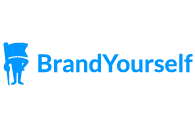
Creating A Personal Brand: 4 Things To Learn From Corporate Branding
Companies understand the power of branding. They spend millions of dollars a year making a brand promise to customers that goes beyond the technical and physical attributes of a particular product. They build an identity – one that customers feel safe choosing over the competition.
Corporate branding and its principles can work for you on an individual level. It establishes you as the “go to guy” for your area of expertise. As a freelance web designer, I rarely spent time looking for clients. They usually came to me. “My friend told me you do websites…” they’d say. That’s the power of a brand: it builds an identity that customers feel safe choosing over the competition.
So, what can we learn from corporate branding, and how can we apply it to ourselves?
1. Unique Selling Point
- Corporate Branding. All companies must identify what differentiates their product. Why is it better than other similar products out there? Is it quality? Speed? The customer service that comes along with it? Patented technology? Excellence in design?
- Personal Branding. Identify your own unique selling point. What makes you different? Better? Do you do things faster than your competition? Do you provide superior quality? Do you work more closely with people on a friendly, human level? Do you have a knack for making complex things simple? You may need to do some soul-searching, or even ask a few friends.
2. Competitive Analysis
- Corporate Branding. A company must position itself effectively against its competition. It must analyze how other companies in its niche are portraying their brands, so that it can see what works (and what doesn’t). Then they can then create a much more compelling brand for themselves.
- Personal Branding. Use your competition to your advantage. Look at how other people offering similar services portray their brands. Then build on them to create an even more compelling one for yourself. For example, if you’re an artist, browse artist galleries on the web to see how they’re showcasing their abilities. Then take the best qualities of each one and mix it with your own style.
3. Values
- Corporate Branding. A company’s values guide its decisions. “The boss says we need to lay someone off. Jane suggested letting go of our phone tech support guy. But that wouldn’t jibe with our company value of superior customer service.” Corporate values such as superior customer service lay the foundation for decisions that coincide with a company’s brand promise.
- Personal Branding. Personal values act in a similar way. They are the principles that shape your work habits and the way you interact with other people. Take a hint from your personality traits to find what values are important to you. Are you extremely shy? That may mean you prefer working on a project alone until it’s absolutely perfect before showing it to other people. Your shyness may stem from perfectionism, which says, “This person values the highest standards of quality in all their work.” Identify the values that guide you, then focus on the ones will be most critical to your future success.
4. Impressions
- Corporate Branding. An “impression” is when someone looks at a logo, picture, ad, website, or other visual media related to a company and that image gets embedded in their mind. Each impression strengthens the connection between a company and its brand promise for that person. Corporate branding pushes a company’s image onto as many people as possible, because the more potential customers see the brand, the more they trust that company can deliver on its promise – and the more they think about that company as they go about their day. Impressions aren’t limited to advertising – companies also brand their invoices and hire companies like ndis plan management canberra to manage their finances, using their logo and tagline to strengthen the relationship between their name and their brand.
- Personal Branding. With everyone you meet, strengthen the association between your face and what you excel at. You want your name to be seen in a positive light by as many people as possible. That means every time you post a comment on a blog or forum, every time you send an email, every time you complete a project or presentation, put your name on it. Anonymity is not your friend. Take pride in all your work and connect it back to your brand. The more people come across these “crumbs,” the more you convince them that you can deliver on your brand promise. So include your name, your tagline (what you do and who you do it for) and your contact info in all your work.

I must say this is a great article i enjoyed reading it keep the good work 🙂
Thanks Dan!
Can anyone think of another business branding principle that applies to personal branding?
Hi! great job. Though I’ve not finished reading it, the little I read was marvelous.